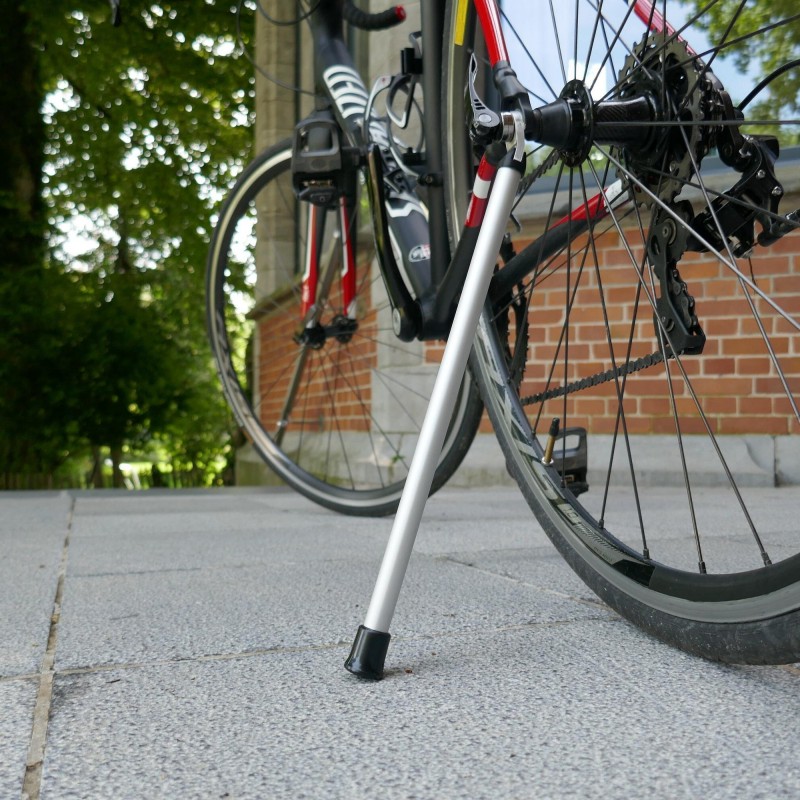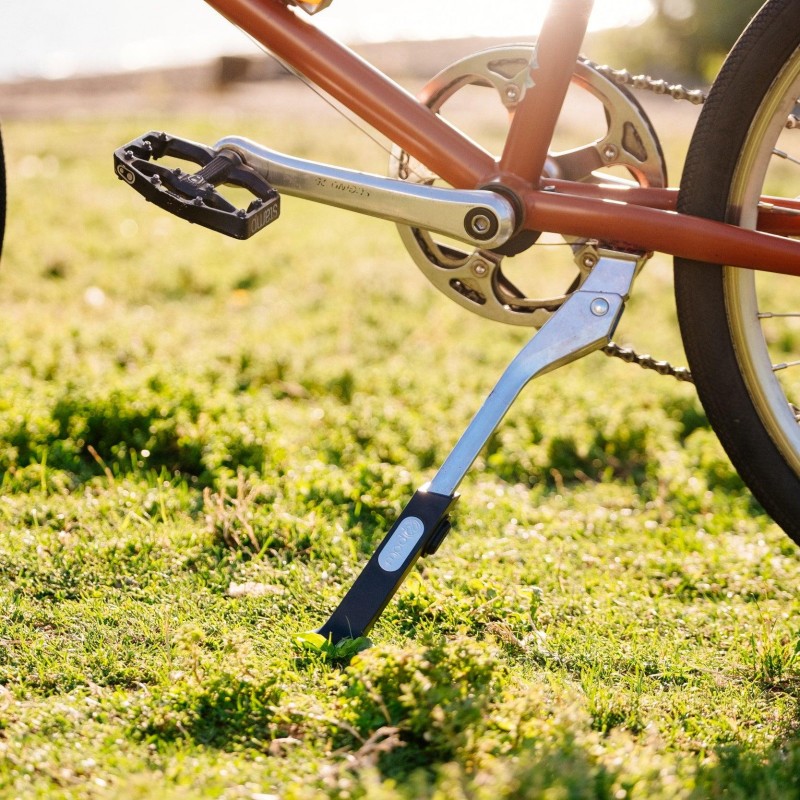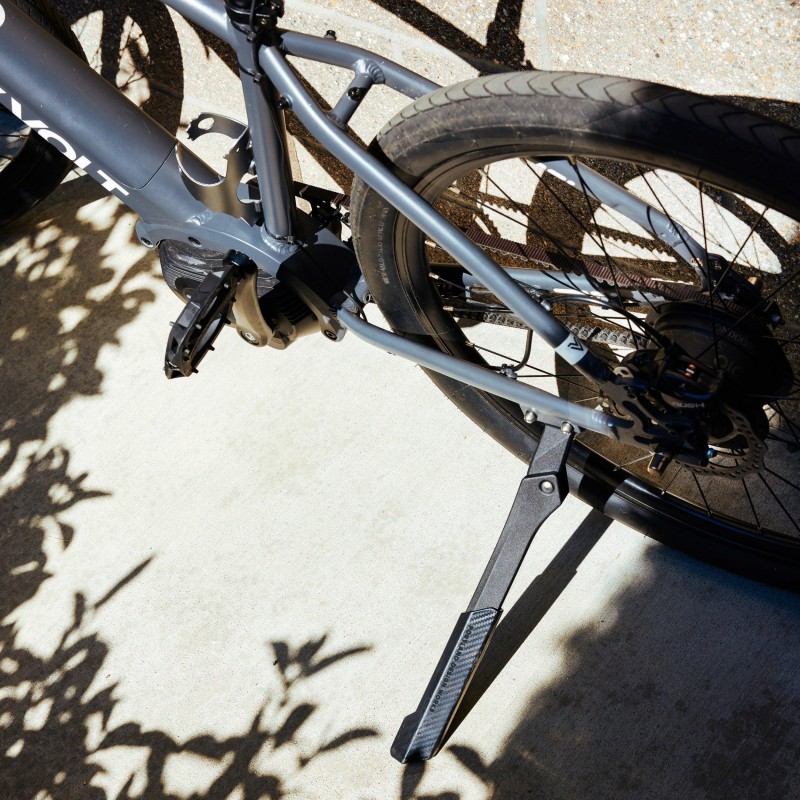Bicycle enthusiasts and casual riders alike appreciate the importance of having reliable kickstands for their bikes. One such innovative option is the leash-style kickstands, which offers a unique take on traditional kickstands. What sets leash-style kickstands apart from standard variants is their design and functionality. This type of kickstand utilizes a flexible leash mechanism that enables it to effortlessly support the bicycle at an inclined angle, providing stability and convenience in various situations.
By incorporating leash-style kickstands, cyclists can enjoy several advantages, including ease of use, improved stability, and a more secure parking experience. Furthermore, understanding how to select the right leash-style kickstand for your bike, as well as recognizing the benefits of proper installation and maintenance, can enhance your cycling experience. This comprehensive guide will cover everything you need to know about leash-style kickstands, including their features, benefits, installation instructions, and comparisons to traditional kickstands. By the end of this article, you will have a firm grasp on how to choose and utilize leash-style kickstands effectively.
The Basics of Kickstands
Before diving deep into leash-style kickstands, it’s important to understand the basic function and design of kickstands themselves. Kickstands serve a fundamental role in keeping bicycles upright when parked, and their design affects overall usability and performance. Here are some key points about traditional kickstands:
1. Kickstand Types
- Single-leg Kickstands: Easily the most common type, a single-leg kickstand supports the bike on one side. It’s lightweight and straightforward but may allow for instability depending on the terrain.
- Double-leg Kickstands: These consist of two legs that provide additional stability, especially when parking on uneven surfaces. However, they can add weight and may require more space, making them less convenient for casual use.
2. Material and Durability
Most kickstands are made from metal or sturdy plastic materials. The durability of the kickstand is essential to ensure it supports the weight of the bike without bending or breaking. Additionally, its resilience against rust and corrosion will influence how long it lasts.
3. Height Adjustable
Some kickstands feature adjustable heights, allowing cyclists to customize their kickstand according to their bike’s frame size. This is particularly useful for mountain bikes or custom bicycles with unique sizing.
4. Weight Distribution
Distributing weight evenly is critical for the effectiveness of a kickstand. A well-balanced bike can stand securely, reducing the risk of falling or tipping over, which leads to unnecessary damage.
Understanding these basic elements provides insight into the traditional kickstand design, which sets the stage for a more in-depth examination of leash-style kickstands.
What Are Leash-Style Kickstands?
Leash-style kickstands are a modern evolution in bicycle support systems. They combine traditional kickstand functionality with a more adaptable design, making them an excellent option for various cyclists. Here’s a closer look at what distinguishes them:
1. Flexible Design
The distinctive feature of leash-style kickstands is their flexible, leash-like cord that can extend and retract. This design allows for variable angles of support, accommodating different surfaces and conditions.
2. Enhanced Stability
Leash-style kickstands offer enhanced stability by providing a wider support base. When extended, they help prevent the bike from tipping over, especially on sloped or uneven terrain.
3. Quick Deployment
The mechanism of leash-style kickstands allows for quick and easy deployment. Riders can park their bikes almost anywhere without fussing with traditional kickstand adjustments, making them user-friendly.
4. Lightweight Materials
Typically, leash-style kickstands are made from durable yet lightweight materials, ensuring minimal impact on overall bike weight while maintaining strength and reliability.
This modern innovation provides both functionality and ease of use, making it an appealing choice for cyclists looking for dependable kickstand solutions.
Benefits of Leash-Style Kickstands
Choosing a leash-style kickstand comes with a unique set of advantages. Here are some significant benefits to consider:
1. Convenient Parking
Leash-style kickstands enable cyclists to park on various surfaces easily, from grass to gravel, without worrying about stability. This ease of use is particularly valuable for casual rides and park visits.
2. Increased Safety
The enhanced stability of leash-style kickstands means reduced risk of tipping, which can prevent accidents and potential injuries. Cyclists can rest easier knowing their bikes are secure.
3. Versatility
Leash-style kickstands are versatile enough for different types of bikes, including mountain, road, and hybrid bicycles. This adaptability allows for widespread usage regardless of riding style or conditions.
4. Space Efficient
Unlike double-leg kickstands that require more space to settle, leash-style kickstands can support the bike at various angles. This can be beneficial when parking in tight spots.
5. Stylish Options
Many leash-style kickstands come in various colors, finishes, and designs, offering stylish aesthetics that match the look of modern bicycles while ensuring practicality.
Incorporating a leash-style kickstand offers multiple benefits that enhance the overall cycling experience for both casual and avid riders.
How to Install a Leash-Style Kickstand
Installing a leash-style kickstand requires some simple tools and basic mechanical knowledge. Here’s a step-by-step guide to help you through the installation process:
What You Will Need
- A leash-style kickstand
- Wrenches or Allen keys (depending on your kickstand)
- A screwdriver
- Rags or towels for cleaning
1: Prepare Your Bicycle
- First, find a flat surface to work on your bike. This ensures you can mount the kickstand securely and accurately.
2: Remove the Old Kickstand
- If your bike already has a kickstand, use appropriate tools to remove it. Check for screws or bolts that may secure the kickstand to the frame.
3: Clean the Mounting Area
- Wipe down the area where the new kickstand will be mounted. Remove any dirt or debris to ensure proper adherence.
4: Position the New Kickstand
- Align the leash-style kickstand with the mounting holes. Ensure the spring mechanism is facing the bike and not obstructing any other components.
5: Secure the Kickstand
- Use the screws or bolts that came with the kickstand to attach it securely to your bike frame. Ensure all components are tightened properly but avoid overtightening.
6: Test the Kickstand
- Once installed, gently test the functionality of the kickstand by lifting your bike slightly. Ensure it provides stable support without wobbling.
7: Take It for a Spin
- After installation, take your bike out for a test ride to ensure the kickstand works well while parked.
By following these steps, you can easily install a leash-style kickstand and enjoy the benefits it brings to your cycling experience.
Maintenance Tips for Leash-Style Kickstands
To ensure that your leash-style kickstand functions effectively over time, regular care and maintenance are essential. Here are some practical tips to extend its life:
1. Regular Inspection
Frequently check the kickstand for any signs of wear or damage, focusing on the connection points and the leash mechanism itself. Addressing issues early can prevent more significant problems later.
2. Cleaning
Dirt and debris can accumulate on the kickstand and its mechanism. Use a clean, dry cloth to wipe it down regularly, ensuring no obstructions interfere with its operation.
3. Lubrication
Apply a little lubricant to the joints and moving parts of the kickstand to ensure smooth operation. Avoid using heavy grease, as this can attract dirt.
4. Tightening Hardware
Over time, nuts and bolts may loosen from regular usage. Periodically check and tighten any hardware related to the kickstand to maintain stability.
5. Avoid Extreme Conditions
If you anticipate riding in extreme weather conditions, consider temporarily stowing away the kickstand. Harsh conditions can wear out materials or cause damage that may not be immediately visible.
6. Store Properly
When not in use, store your bike in a dry area, ideally indoors. This helps protect both the bicycle and the kickstand from environmental damage.
By establishing and adhering to a simple maintenance routine, you can keep your leash-style kickstand in excellent working condition for an extended period.
Advanced Features in Leash-Style Kickstands
As technology evolves, so do the offerings in bike accessories, including leash-style kickstands. Here are some advanced features being introduced:
1. Adjustable Height
Some modern leash-style kickstands come with adjustable height settings. This feature allows users to modify the kickstand’s height according to their specific needs, offering enhanced versatility with different bikes.
2. Integrated Storage
Certain designs incorporate storage compartments or hooks for small items, making them functional beyond simple support while parked.
3. Smart Technology
Emerging technologies are beginning to influence bicycle accessories. Some manufacturers are exploring smart rearview features that seamlessly integrate with the kickstand, enhancing safety for urban riders.
4. Enhanced Stability Mechanisms
Improved designs offer superior stability through innovative mechanisms, ensuring that even on uneven terrain, the bike and kickstand provide reliable support.
By understanding these advanced features, you can make more informed decisions about which leash-style kickstand best meets your needs and preferences.
Conclusion
In conclusion, understanding how to choose the right leash-style kickstand not only enhances your biking experience but also contributes to security and convenience while parked. By recognizing the advantages of these kickstands—from their flexible design to their increased stability—you can make informed choices that fit your riding style and environment.
This comprehensive guide has covered the fundamentals of what a leash-style kickstand entails, signs of potential wear, installation steps, maintenance tips, and advanced features that modern designs may offer. Armed with this information, you can confidently select, install, and maintain a kickstand that complements your biking needs.
Ultimately, whether you’re a casual cyclist or an avid biker, investing in quality accessories like leash-style kickstands will greatly enhance your riding experience. Ride safely and with ease, knowing that your bicycle is well-supported wherever your journey takes you.


